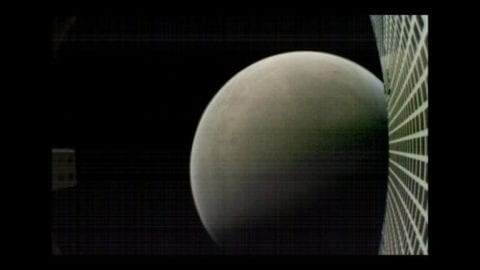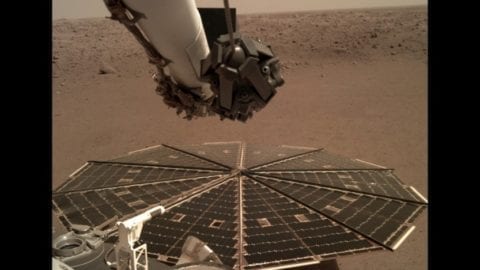The Interior Exploration using Seismic Investigations, Geodesy and Heat Transport (InSight) spacecraft recently landed on the surface of Mars, the red planet, adding to the impressive list of NASA spacecraft surveying the planet. Launched with InSight were two briefcase-sized smallsats called Mars Cube One (MarCO) A and B to serve as technology demonstrators proving that smallsats can survive environments outside low earth orbit and transmit InSight landing data back to Earth mere minutes after touchdown.
Metis employees had a hand in the successes of this mission from before launch, leading pre-launch Deep Space Network (DSN) station training to familiarize the network with Insight operations with continued support in flight with necessary configuration updates to allow for consistent uplink and downlink communications. Metis also performed pre-launch link budget analysis using navigation team launch trajectory profiles and presented his findings to JPL management, and developed antenna search patterns in case of an anomalous launch scenario and validated frequency predicts pre-launch and pre-landing.
InSight has completed the journey to Mars and is starting its primary mission. Over the next several years, scientists hope to learn more about Mars through the data gathered by InSight. MarCO A and B continue to receive signal from Earth and transmit back, though they both have left Mars in their rear-view mirrors. Metis DSN staff, as well as many others, are committed to continued support of these three spacecrafts as they continue to enrich our understanding of our celestial neighborhood.
In addition to InSight, Metis DSN staff supported nine critical activities over five days leading up to New Horizon’s Ultima Thule encounter. The team collaborated with a Stanford University principle investigator to support a Radio Science experiment to collect data about atmospheric temperature and pressure profile. On the last day of 2018 and over 3.7 billion miles away, the DSN performed this experiment with the help of project scientist’s optical navigation images to help maneuver to the oddly shaped rock. It took twelve hours for the signal to travel to the spacecraft and return to Earth, and the Ultima Thule image arrived the next day. On January 2nd the spacecraft played back science data recorded and images captured at 3,500 kilometers from the rock. Scientist then commanded the spacecraft into a safe configuration to enter solar conjunction. The New Horizons project is a remarkable mission making major discovers about Pluto and the Kuiper belt. It will continue to fly well into the 2030s.


